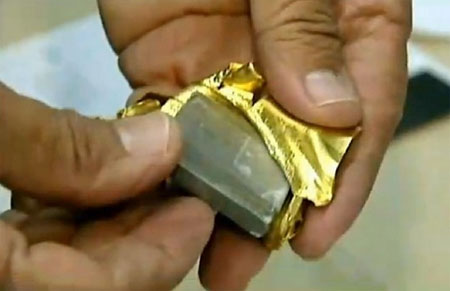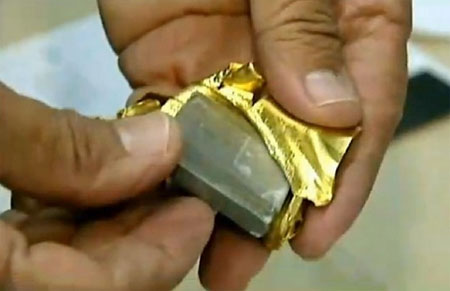
As the price of gold begins to inch its way up, a whole new flood of buyers start looking for gold.
(Weird thing…few people buy gold when the price is going down or stagnant. They prefer to buy when the price is higher!)
Anyway, as these occasional or “amateur” buyers start looking for dealers, the counterfeiters come out of hiding.
Counterfeiters operate in a variety of ways, but their most notorious trick is to sell gold bars which are nothing more than a core of tungsten with a pure gold coating or sleeve.
Hang on, you say…just weighing the coin or bar will tell you whether it’s pure gold or not. Right?
Wrong … for the simple reason that tungsten has the same density as gold, down to three decimal points.
This means someone can create a coin or bar with tungsten, and then add a thin layer of 0.999 gold on the exterior.
These bars not only fool amateurs, but have also been known to take down professional dealers.
Here is how the sting works.
First the counterfeiter buys a few one-kilo gold bars from a dealer.
Now they take an exact impression of each bar, including the hallmarks, and identifying numbers.
Next they create tungsten cores and then add a layer of thin layer of gold around them, including those unique markings.
The next step is to sell the fake bars back to the same dealer. They appear to be the same bars, right down to the unique identifier numbers. The seller can even show the original invoice.
The dealer buys them back.
The counterfeiter now has the cash from the dealer, plus all the gold he originally bought, minus the small amount of gold he melted down to cover the tungsten cores.
It’s a pretty sweet deal for the counterfeiter. And the only way a scam like this can be discovered is by drilling into the bar itself. This is something a dealer won’t want to do. So a dealer may then sell those fake bars to you without even knowing they are fake.
Or, he might suspect they are fake, but sell them to you anyway.
This can be a problem for people with deep pockets buying gold bars.
But if you are buying gold coins, you might also have cause for concern. There are plenty of fake coins out there as well.
Years ago, one of the oldest, largest and most experienced wholesalers in the world got stuck with $3.5 million of counterfeit gold coins. They were stung big time.
And back in 2009 thousands of Chinese-made counterfeit coins hit the streets. It is estimated that there are over 1 million fake bullion coins floating around in the U.S. alone.
I’m not trying to scare you or put you off buying gold bullion. Far from it. But I am urging you to be smart and cautious.
And the first step in being smart and protecting yourself against fraud is to buy gold from reputable dealers. In addition, you should specify that you want your bars or coins to have come direct from the mint, in their original packaging, without having passed through any other buyers.
This way you can minimize your risk and protect the value of your bullion holdings.
About the author: DH Kenrick is a student of world economics and a committed gold enthusiast. Follow me on Google+
You can also follow Owning Gold on Facebook…


